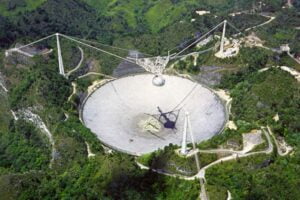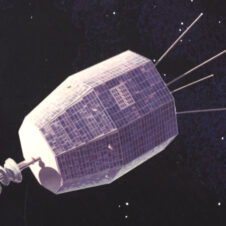The Arecibo Observatory was a unique facility, the world’s largest single-dish telescope for over 50 years, which dramatically collapsed in December 2020 after sustaining structural damages earlier in the year.

The Arecibo telescope was instrumental in laying the groundwork for NASA to land a robotic probe on asteroid Bennu. Image: Arecibo Observatory
Thanks to its unmatched sensitivity and very skilled personnel dedicated to its maintenance and operation, Arecibo contributed many ground-breaking discoveries in several fields of astronomy, as well as state-of-the-art legacy surveys that will be exploited for many years after its demise.
A few highlights that illustrate the impact of this facility include the Nobel-prize discovery of the first binary pulsar in 1974, the first radar maps of the surface of Venus in 1981, the discovery of the first millisecond pulsar in 1982 and the first extrasolar planets in 1992, the discovery of ice at the North and South poles of Mercury in 1992, and the first ever repeating fast radio burst in 2016.
Its impact on extragalactic astronomy was also impressive, especially via observations of the 21 cm line of atomic hydrogen, which allowed the mapping of the large-scale structure of the nearby Universe and provided key insights into the fuel for star formation in the Milky Way and in tens of thousands nearby galaxies.
The list of Arecibo’s achievements is much longer, but its scientific output is not the only reason why this facility will be so dearly missed. To those lucky astronomers who had the privilege to visit Arecibo and marvel at the engineering marvel that it was, this was a truly special place – thanks also to the engineers, technicians, maintenance workers, telescope operators, administrators, cooks and many others that made the observatory such a welcoming and unforgettable place.
Written by Dr Barbara Catinella, who led the GALEX Arecibo SDSS Survey (GASS) and its low-mass extension, xGASS (http://xgass.icrar.org), measuring the atomic hydrogen properties of 1200 galaxies. Dr Catinella held a postdoc at Arecibo Observatory before joining ICRAR in 2015.

